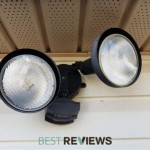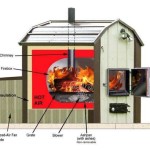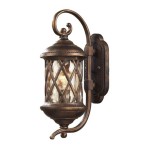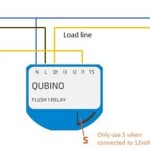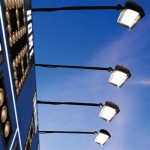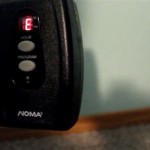How to Use Timers for Outdoor Lights
Outdoor lighting plays a crucial role in enhancing security, curb appeal, and ambiance. However, manually switching lights on and off can be inconvenient and energy-inefficient. Fortunately, timers offer an effective solution, automating the lighting process and optimizing energy consumption. This article explains how to use timers for outdoor lights, covering various timer types, installation processes, and practical tips for achieving optimal results.
Types of Timers for Outdoor Lights
Timers for outdoor lights come in various forms, each offering distinct functionalities and suitability for specific applications. Understanding the different types helps choose the most appropriate timer for individual needs.
1. Plug-in Timers
Plug-in timers are simple and convenient options for controlling outdoor lights connected to standard outlets. They are compact devices plugged into an outlet and have a switch or dial for setting the on/off times. These timers are ideal for basic applications, such as turning on patio lights at dusk or switching off holiday decorations at a specific time.
2. Hardwired Timers
Hardwired timers are permanently installed within the electrical system, offering greater control and flexibility. They are connected directly to the electrical wiring of the outdoor lighting circuit, eliminating the need for outlets. Hardwired timers are suitable for more advanced applications, such as controlling security lights, landscape lighting, or pool lighting.
3. Smart Timers
Smart timers offer the most advanced functionality and convenience. They connect to the internet, enabling remote control and scheduling through smartphone apps. Smart timers often include features like weather sensing, allowing lights to adjust automatically based on daylight hours. They are ideal for homeowners seeking greater customization and control over their outdoor lighting.
Installing Outdoor Light Timers
The installation process varies depending on the type of timer chosen. However, some general steps apply to most installations.
1. Safety Precautions
Before undertaking any electrical work, it is crucial to prioritize safety. Always disconnect power to the circuit before working on wiring. This prevents electrical shocks and potential hazards. Use appropriate safety equipment, such as insulated gloves and non-conductive tools, to minimize risk.
2. Choosing the Right Location
The timer's location should be easily accessible and protected from the elements. For plug-in timers, select a weatherproof outlet. Hardwired timers should be placed in a dry, protected location, such as a junction box or inside the house. Consider the wiring length and potential cable runs to ensure a smooth installation process.
3. Connecting the Timer
Follow the manufacturer's instructions carefully when connecting the timer. Plug-in timers simply plug into a standard outlet. Hardwired timers require connecting to the electrical wiring of the outdoor lighting circuit. Depending on the timer and circuit configuration, this may involve connecting to live, neutral, and ground wires.
Programming and Setting Up Timers
Once installed, programming the timer is crucial to achieve desired results. The process varies slightly between timer types.
1. Basic Plug-in Timers
Basic plug-in timers typically have a dial or switch for setting on/off times. Simply rotate the dial or switch to the desired settings. These timers often have multiple options, such as daily, weekly, or sunset/sunrise schedules.
2. Hardwired Timers
Hardwired timers often have a digital interface with buttons for setting on/off times. The programming procedure usually involves navigating through menus and adjusting the desired settings. Some models may require setting the current date and time for precise timing accuracy.
3. Smart Timers
Smart timers are programmed through a smartphone app. The app allows for customizable schedules, remote activation, and integration with other connected devices. Smart timers offer a high degree of flexibility, allowing users to adjust settings on the fly depending on individual needs and preferences.
Using Timers for Outdoor Lights: Practical Tips
Here are some practical tips for maximizing the benefits of using timers for outdoor lights.
1. Optimize Lighting Schedules
Consider the specific purpose of the outdoor lights when setting the timer schedules. For security lights, setting them to turn on at dusk and off in the morning is a standard approach. For decorative lighting, adjust the schedules to match the intended use and create a desired ambiance.
2. Utilize Dusk-to-Dawn Sensors
Dusk-to-dawn sensors automatically turn lights on at dusk and off at dawn, providing a convenient and energy-efficient solution for security and safety. Integrating sensors with timers allows for greater control and customization, enabling the lights to operate only during specific hours or days.
3. Schedule Seasonal Adjustments
Daylight hours change throughout the year, necessitating adjustments to timer schedules. In the winter, when daylight hours are shorter, it may be necessary to adjust the on/off times to ensure sufficient illumination during the evening. Similarly, in the summer, the schedules may need to be adjusted to avoid excessive lighting during daylight hours.
4. Consider Energy Efficiency
Utilize energy-efficient light bulbs, such as LED bulbs, to minimize energy consumption. LED bulbs consume less power than traditional incandescent bulbs, reducing electricity bills while maintaining brightness. Ensure the overall lighting system is designed for optimal efficiency, minimizing unnecessary light spills and promoting energy savings.

How To Adjust Your Timer For Daylight Savings Spring Lexington Outdoor Lighting

The Automatic Timers For Your Outdoor Use

How To Set The Start And Stop Times An Outdoor Light Timer

Electrical Installing A Outdoor Light Timer Home Improvement Stack Exchange

How To Use A Timer Switch For Lights

Utilitech Outdoor Manual Timer Easy Setup

How To Adjust Your Og Landscape Lighting Timer For Spring

How To Program An Intermatic Heavy Duty Outside Light Timer

How To Set An Outdoor Light Timer Moreday

3 Remarkably Easy Solutions For An Automatic Porch Light Timer
Related Posts
